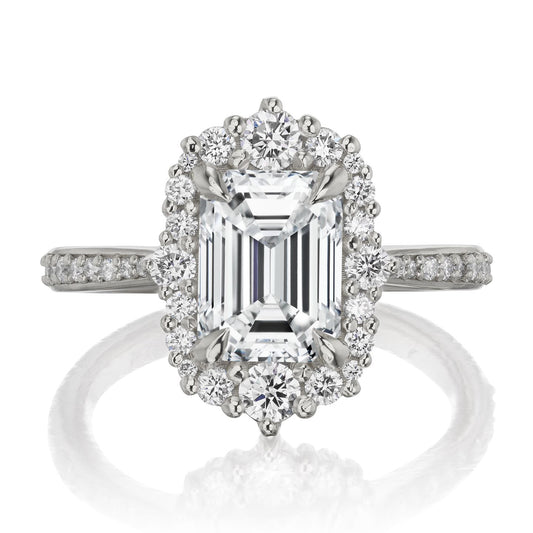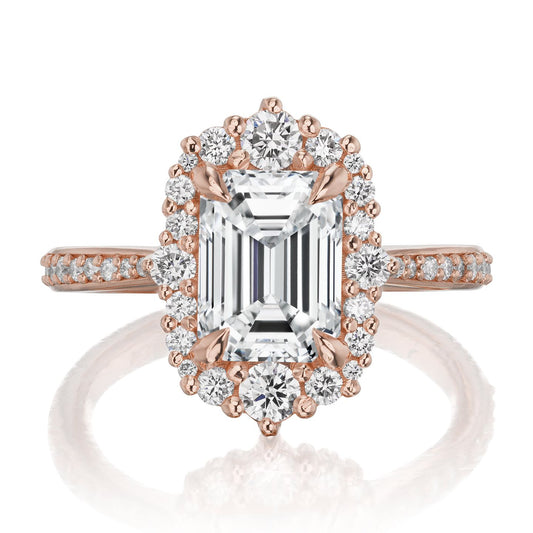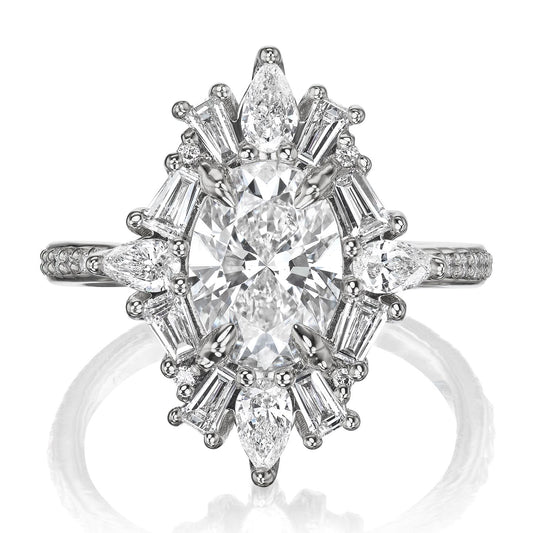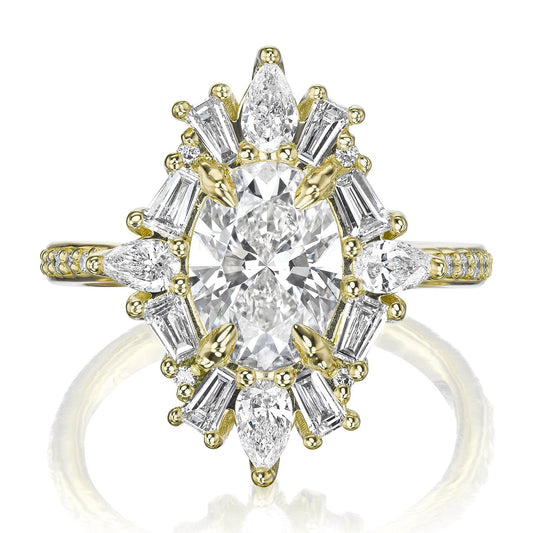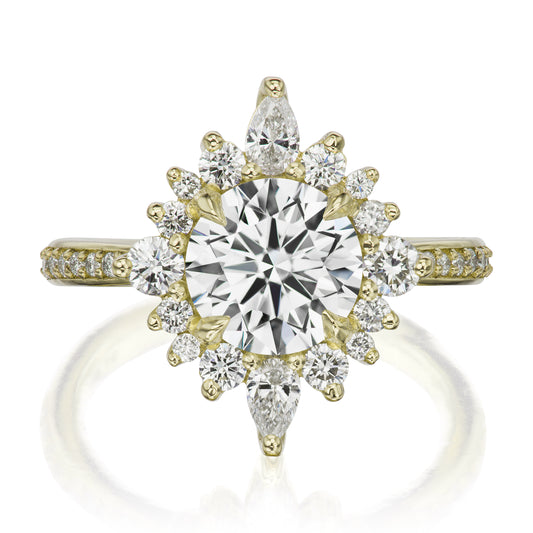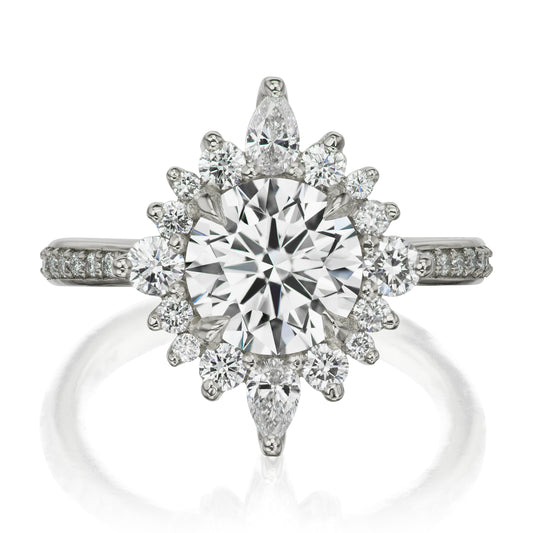learn about lab-grown diamonds
Diamonds without the Guilt
Lab-grown diamonds are everything you love about those sparkling, classic, clear rocks, but without all the guilt – or the price tag. Read on to learn how they compare to mined diamonds, and all that’s to love about this more sustainable, and more affordable option.
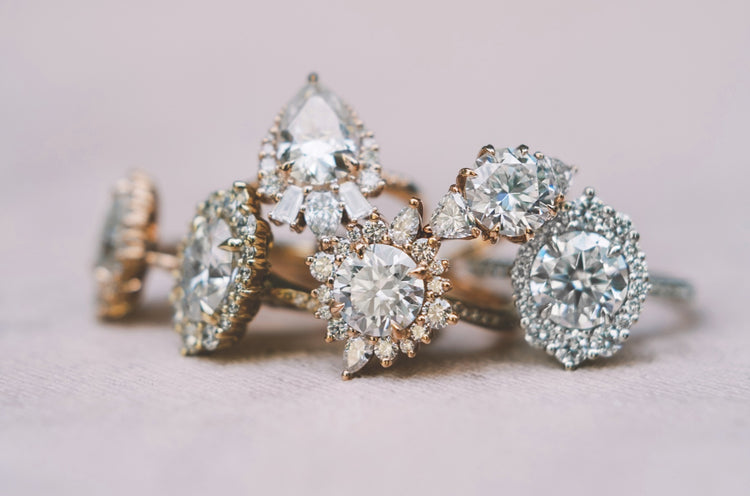
THE REAL DEAL
Are Lab-Grown Diamonds Real Diamonds?
Simply put, a lab-grown diamond is identical to a mined diamond. The only difference is origin. Man-made diamonds are grown in laboratories that recreate the same environment that causes diamonds to form in the earth. The rough diamonds created in the labs are then cut, polished, and graded just like a diamond mined from the earth. The resulting diamonds are every bit as real as mined diamonds -- but without the cost to your wallet or conscience.
DIAMOND PROPERTIES
Can You Tell the Difference Between Lab-Grown and Mined?
A lab-grown diamond and a mined diamond are visually identical in every way. They have the same chemical structure (both are composed of 100% carbon), the same physical makeup, and the same optical properties. Lab-grown diamonds have the exact same brilliance, sparkle, and scintillation as mined diamonds. Just like mined diamonds, the color won’t fade in color or change color, nor will lab-grown diamonds get cloudy. Distinguishing between a mined diamond and lab-grown diamond requires very sophisticated and specialized equipment – even an expert gemologist can’t tell the difference with the naked eye.
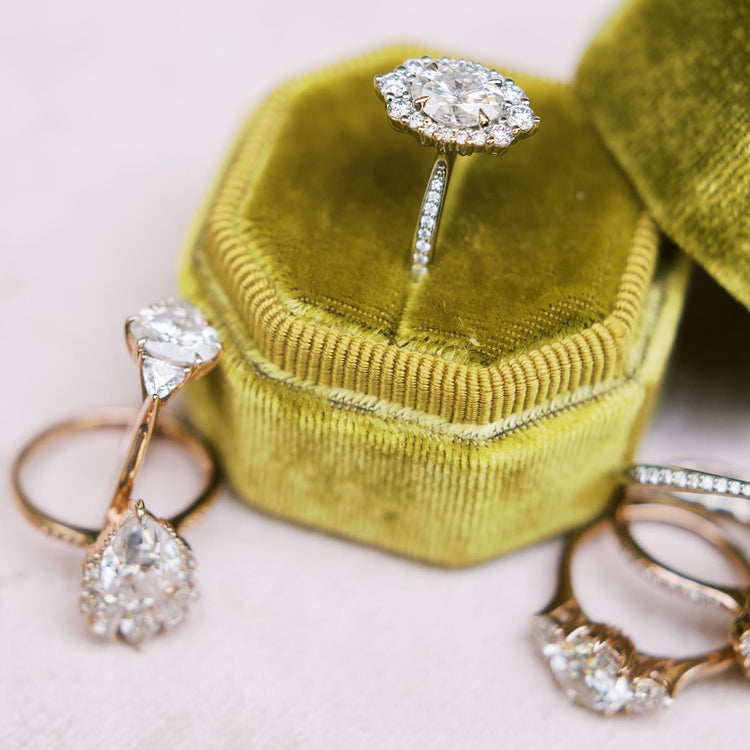
LAB-GROWN vs. MINED:
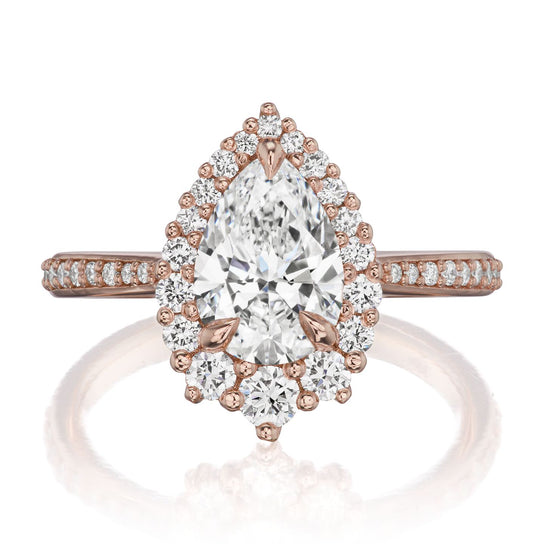
Lab-Grown
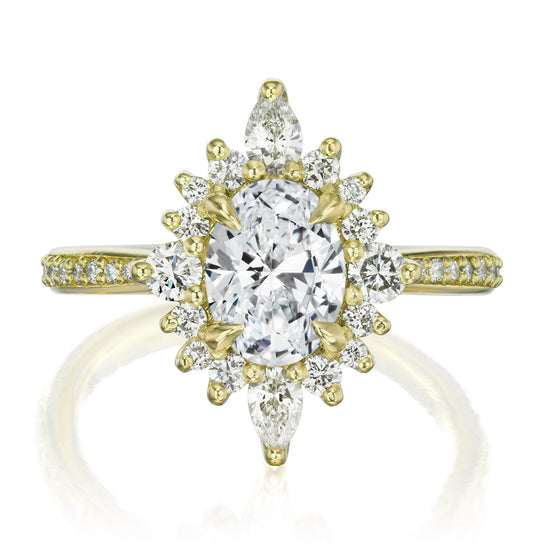
Mined
GRADING & CERTIFICATION:
-
1) They come in a range of qualities:
Just like mined diamonds, lab-created diamonds vary in clarity, color, and cut. That means every lab-grown diamond is just as unique as a mined diamond, and has its own set of unique characteristics.
-
2) Graded by The 4C’s:
Lab-grown diamonds are graded via the same system as mined diamonds. The system is known as The 4 C's, which stands for Carat, Clarity, Color, and Cut.
-
3) Strict standards:
Lab-grown diamonds are graded by the same independent gemological labs that grade mined diamonds, and by the same rigorous standards. These independent labs include GIA, IGI, GCAL, and others.
-
4) Grading report & laser inscribed:
Lab-grown diamonds come with the same type of grading report as mined diamonds. Some labs, such as IGI and GCAL, supply both printed and electronic copies of their reports. While other labs, such as GIA, provide only electronic reports. Every diamond is also laser inscribed along the girdle to signify that it’s lab-grown. The grading report will state that it’s lab-grown as well.
-
5) Everlūm Certificate:
In addition to a grading report from an independent gemological laboratory, every Everlūm diamond also comes with a Certificate of Authenticity, so that you know you’re getting a diamond that was expertly selected for its brilliance, cut, fire, and color.
The Science
How are Lab-Grown Diamonds Made?
Lab-grown diamonds can be created using two different methods: High Pressure-High Temperature (HPHT) or Chemical Vapor Deposition (CVD).
Method 1
HPHT Method
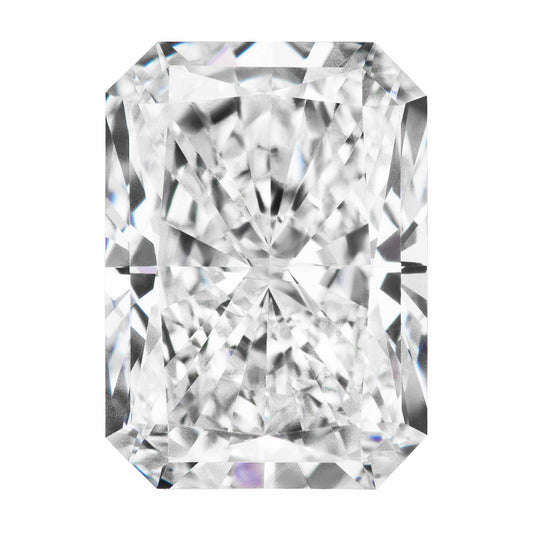
An HPHT diamond begins as a seed that’s placed in a growth chamber with graphite (carbon) and a catalyst mixture of powder and metals. The diamond seed, graphite, and catalysts are then exposed to extreme pressure (1.5 million pounds per square inch) and very high heat (around 1500 Celsius). The carbon begins to melt around the seed forming a rough diamond.
Method 2
CVD Method
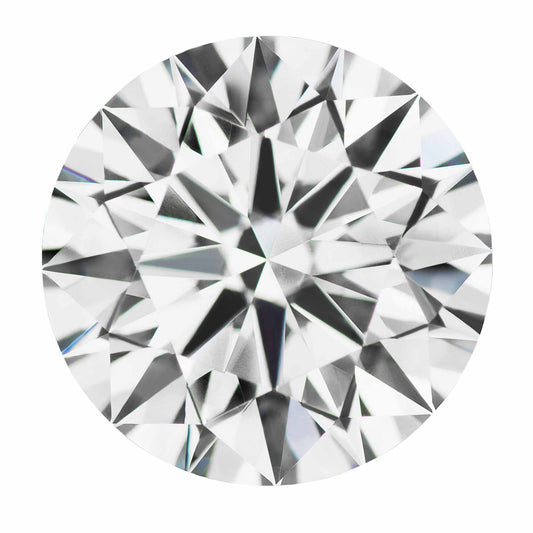
A CVD diamond begins as a thin layer of diamond as a foundation. It’s placed into a chamber and exposed to extremely high heat that rivals the intensity of the outer layer of the sun. The chamber is filled with carbon-rich gases, which are ionized, thus separating the carbon atoms. The free carbon atoms adhere to the thin layer of pure carbon diamond. Atom by atom, it grows into a rough diamond.
Cutting
Diamond Cutting
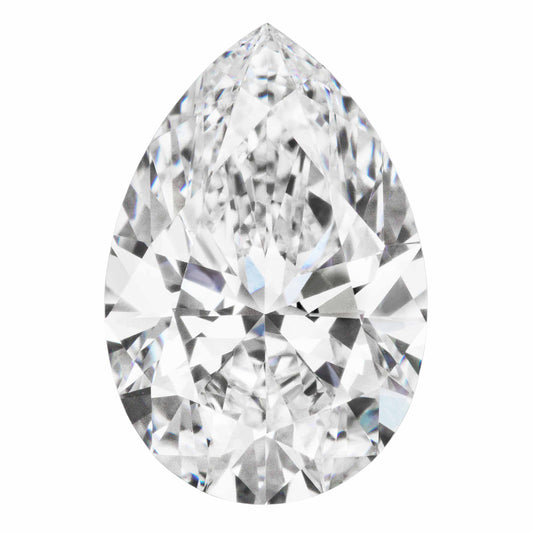
After the HPHT or CVD process, the rough diamonds are then cut by master stone cutters – the same cutters who cut mined diamonds. Up to 80-90% of their mass is often loss in order to maximize brilliance, clarity, and fire. Large diamonds are sent to a grading laboratory to get certified and laser-inscribed with a unique serial number. (Just like with small accent-sized mined diamonds, small lab-grown diamonds also don’t come with grading reports.)
WHY CHOOSE LAB-GROWN?
An Environmentally Sustainable + Responsible Future
There’s no way around it: a natural diamond is mined from the earth by heavy machinery, leaving behind gaping holes in earth, destruction of large swaths of forests, and irreparable impact to communities and delicate surrounding ecosystem. Every year the mining industry gets less sustainable and the environmental impact of mining grows, whereas the footprint of lab-grown diamonds shrinks. The simplest explanation is that the more easily accessible diamonds in the earth’s crust have been extracted. The diamonds left in the earth are harder to extract, requiring more energy output and leaving behind deeper and larger holes that disrupt water sheds and wreak havoc on delicate ecosystems. The diamond industry will do everything it can to make you think otherwise, but there is no skirting around the environmental destruction caused by mining. In contrast, a lab-grown diamond skips this destructive process of mining entirely. There is no denying that lab-grown diamonds require an immense of amount of energy to produce, but unlike mining, lab-grown diamond companies are making incredible strides towards using renewable energy for their production. There is no limit to how green or emission-free this industry can become. At Kristin Coffin Jewelry, we feel the purchase of a lab-grown diamond is a step towards a more compassionate and sustainable future.

WHY CHOOSE LAB-GROWN?
Incredible Value
Lab-grown diamonds come in 50-90% less expensive than mined diamonds! However, a lab-grown diamond actually costs just as much as mined diamond to create. So why are lab-grown diamonds less pricey? It boils down to the supply chain: after a mined diamond is extracted from the earth—which is both a monetarily and environmentally costly process in itself – a mined diamond changes hands (often between multiple countries) many times before making its way to a retailer. In contrast, lab-grown diamonds skip the mining process all together and don’t need to travel nearly as far to find their way into an engagement ring. This shorter supply change cuts out much of the unnecessary markup so that you can have the unique diamond you love at a fraction of the
cost.
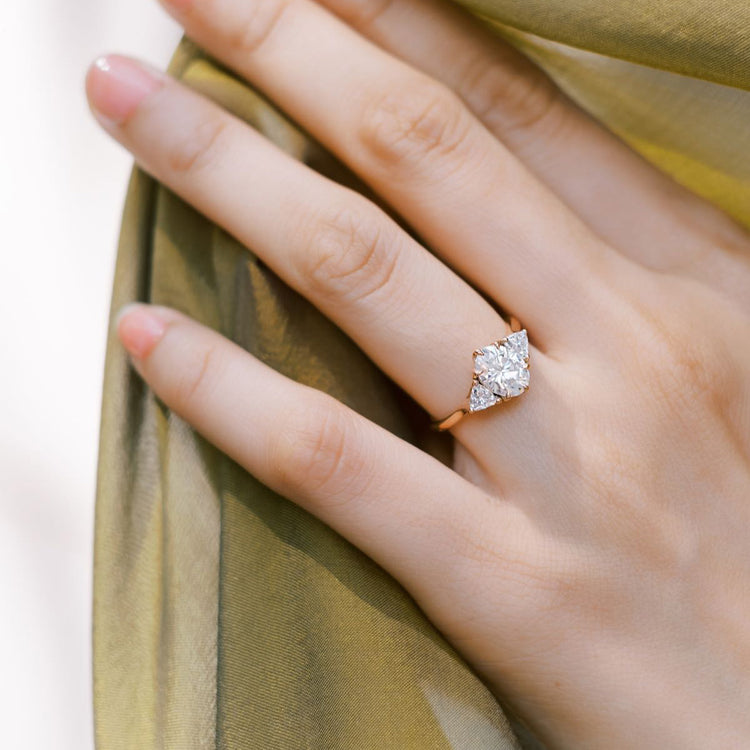
Explore Lab-Grown Diamond Rings
GEM COMPARISON
Are Lab-Grown Diamonds the same as Moissanite?
Moissanite and lab-grown diamonds have a similar appearance, but they have a very different chemical and physical makeup from one another. Moissanite isn’t made from carbon, so it doesn’t have the same molecular, physical, or optical properties as diamond. In contrast, a lab-grown diamond has the same carbon structure, physical properties, and optical properties as a mined diamond. That means lab-grown diamonds have identical fire, scintillation, and sparkle as mined diamonds. In addition to visual and molecular differences, a lab-grown diamond is the most durable gemstone on earth, ranking at 10 on the Mohs Scale of Hardness. In contrast, moissanite ranks at 9.25, making it the second hardest gemstone.


